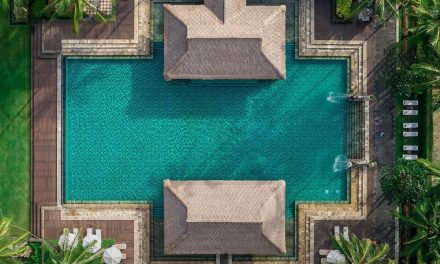If you’re a photography enthusiast, Ubud should be at the very top of your travel list. Nestled in the heart of Bali, this charming town is a haven for stunning landscapes, vibrant culture, and a rich tapestry of life that unfolds in picture-perfect moments. But you might be wondering—when is the best time to visit Ubud for photography? With its lush rice terraces, ancient temples, and vibrant street scenes, timing can make all the difference in capturing the perfect shot. Allow me to take you on a journey of personal anecdotes, unique insights, and practical advice to help you plan your photographic adventure in Ubud.
Understanding the Seasons
Ubud experiences a tropical climate which typically has two main seasons: the dry season and the rainy season.
Dry Season (April to September)
The Best Time for Crisp Shots
During these months, you’ll find Ubud bathed in sunlight. The dry season is characterized by minimal rainfall and plenty of blue skies. From personal experience, I visited in July and woke up every morning to crystal-clear skies that made the rice paddies glow in the morning light. If you’re aiming for those iconic, golden hour shots, the dry season is undoubtedly the best time to visit.
Tip: Set your alarm early for the sunrise. One morning, I stumbled out of bed just before dawn and made my way to the Tegalalang Rice Terrace. As the sun slowly rose, painting the sky in shades of pink and orange, I captured some of the most breathtaking images of my trip.
Rainy Season (October to March)
Embrace the Dramatic Skies
Now, I know what you might think: “Rain? That doesn’t sound like the best time to take photos!” But hear me out. The rainy season can actually offer unique opportunities for spectacular shots—think dramatic skies, intense greens, and fewer tourists. During a visit in December, I was fortunate to experience the lush landscape at the peak of the rainy season. The contrast of the vibrant green rice fields against the moody, grey clouds made for some incredibly atmospheric shots.
Tip: Don’t shy away from the rain! A compact rain cover for your camera can save the day. One afternoon, I took shelter in a market during a downpour. The rain-soaked streets glistened, creating beautiful reflections of the market stalls, and I came away with some of my favorite candid shots of locals going about their daily lives.
Cultural Events and Festivities
One of the unbeatable aspects of visiting Ubud is the chance to immerse yourself in Balinese culture. Time your trip to coincide with some local festivals, like Nyepi (Day of Silence) in March or Ubud’s Art Festival in June and July. These events not only offer a plethora of colorful and dynamic scenes to photograph but also let you engage with the culture.
Personal Anecdote
I remember arriving during the Galungan Festival, a day celebrating the victory of dharma (good) over adharma (evil). The streets were adorned with penjor (decorative bamboo poles), and the locals dressed in their finest traditional attire. There was a palpable sense of joy in the air—perfect for capturing candid moments of celebration. I snapped countless photos, but the highlight was capturing a family gathering outside a temple, their faces illuminated by smiles and intricate offerings in hand.
Ideal Time of Day for Photographs
Aside from the right season, consider the time of day you’ll be out shooting.
Golden Hour Magic
Different lighting can dramatically change the mood of your photos. Early mornings and late afternoons, during the golden hour, present the best lighting for photography. On one of my mornings at the Ubud Monkey Forest, I woke up early to catch the monkeys in their playful antics. The soft, diffused light filtered through the trees, creating a magical atmosphere that left me with some of my most cherished wildlife photographs.
Night Photography
Don’t overlook night photography either. Ubud comes alive at night with vibrant markets and glowing lanterns. After sunset, I ventured to a local night market, where the colors burst forth in a delightful chaos. I experimented with long exposures to capture the motion of people as they moved through food stalls. The results were stunning; a dance of colors and lights that portrayed a lively urban scene.
Practical Advice for Your Trip
1. Check Weather Conditions: Be sure to check the weather forecast regularly, especially if visiting during the rainy season. But don’t let the possibility of rain hold you back; sometimes the clouds give way to brilliant sunsets!
2. Plan Your Routes: Prioritize the places you want to photograph—be it the Tegallalang Rice Terrace, Ubud Palace, or Campuhan Ridge Walk. A little planning can save you time and let you explore at your own pace.
3. Learn from the Locals: Engage with local photographers or guides who can show you hidden gems and share insider tips on capturing the essence of Ubud.
4. Bring Extra Gear: Always carry an extra memory card and battery. The beauty of Ubud will likely have you shooting more than you anticipated!
In Conclusion
So, when is the best time to visit Ubud for photography? In essence, the best time can vary based on what you’re looking to capture. The dry season offers bright, sunny days perfect for landscape photography, while the rainy season invites dramatic shots and vibrant colors. Each time I’ve visited Ubud, I’ve come away inspired, with a camera full of memories. Whether you’re hunting for that perfect sunrise photo, looking to capture cultural festivities, or just wandering the streets, Ubud offers endless opportunities for beautiful photography. Now, grab your camera, pack your bags, and immerse yourself in the breathtaking sights of Ubud. Happy shooting!






